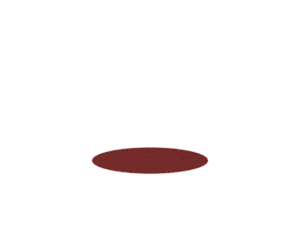Burau representation
In mathematics the Burau representation is a representation of the braid groups, named after and originally studied by the German mathematician Werner Burau[1] during the 1930s. The Burau representation has two common and near-equivalent formulations, the reduced and unreduced Burau representations.
Definition

Consider the braid group Bn to be the mapping class group of a disc with n marked points Dn. The homology group H1(Dn) is free abelian of rank n. Moreover, the invariant subspace of H1(Dn) (under the action of Bn) is primitive and infinite cyclic. Let π : H1(Dn) → Z be the projection onto this invariant subspace. Then there is a covering space Cn corresponding to this projection map. Much like in the construction of the Alexander polynomial, consider H1(Cn) as a module over the group-ring of covering transformations Z[Z] ≅ Z[t, t−1]. As such a Z[t, t−1]-module, H1(Cn) is free of rank n − 1. By the basic theory of covering spaces, Bn acts on H1(Cn), and this representation is called the reduced Burau representation.
The unreduced Burau representation has a similar definition, namely one replaces Dn with its (real, oriented) blow-up at the marked points. Then instead of considering H1(Cn) one considers the relative homology H1(Cn, Γ) where γ ⊂ Dn is the part of the boundary of Dn corresponding to the blow-up operation together with one point on the disc's boundary. Γ denotes the lift of γ to Cn. As a Z[t, t−1]-module this is free of rank n.
By the homology long exact sequence of a pair, the Burau representations fit into a short exact sequence
- 0 → Vr → Vu → D ⊕ Z[t, t−1] → 0,
where Vr (resp. Vu) is the reduced (resp. unreduced) Burau Bn-module and D ⊂ Zn is the complement to the diagonal subspace, in other words:
and Bn acts on Zn by the permutation representation.
Explicit matrices
Let σi denote the standard generators of the braid group Bn. Then the unreduced Burau representation may be given explicitly by mapping
for 1 ≤ i ≤ n − 1, where Ik denotes the k × k identity matrix. Likewise, for n ≥ 3 the reduced Burau representation is given by
while for n = 2, it maps
Bowling alley interpretation
Vaughan Jones[2] gave the following interpretation of the unreduced Burau representation of positive braids for t in [0,1] – i.e. for braids that are words in the standard braid group generators containing no inverses – which follows immediately from the above explicit description:
Given a positive braid σ on n strands, interpret it as a bowling alley with n intertwining lanes. Now throw a bowling ball down one of the lanes and assume that at every crossing where its path crosses over another lane, it falls down with probability t and continues along the lower lane. Then the (i,j)'th entry of the unreduced Burau representation of σ is the probability that a ball thrown into the i'th lane ends up in the j'th lane.
Relation to the Alexander polynomial
If a knot K is the closure of a braid f in Bn, then, up to multiplication by a unit in Z[t, t−1], the Alexander polynomial ΔK(t) of K is given by
where f∗ is the reduced Burau representation of the braid f.
For example, if f = σ1σ2 in B3, one finds by using the explicit matrices above that
and the closure of f* is the unknot whose Alexander polynomial is 1.
Faithfulness
The first nonfaithful Burau representations are found without the use of computer, using a notion of winding number or contour integration.[3] A more conceptual understanding [4] interprets the linking or winding as coming from Poincaré duality in first homology relative to the basepoint of a covering space, and uses the intersection form (traditionally called Squier's Form as Craig Squier was the first to explore its properties).[5] Stephen Bigelow combined computer techniques and the Long-Paton theorem to show that the Burau representation is not faithful for n ≥ 5.[6][7][8] Bigelow moreover provides an explicit non-trivial element in the kernel as a word in the standard generators of the braid group: let
Then an element of the kernel is given by the commutator
The Burau representation for n = 2, 3 has been known to be faithful for some time. The faithfulness of the Burau representation when n = 4 is an open problem. The Burau representation appears as a summand of the Jones representation, and for n = 4, the faithfulness of the Burau representation is equivalent to that of the Jones representation, which on the other hand is related to the question of whether or not the Jones polynomial is an unknot detector.[9]
Geometry
Squier showed that the Burau representation preserves a sesquilinear form.[5] Moreover, when the variable t is chosen to be a transcendental unit complex number near 1 it is a positive-definite Hermitian pairing, thus the Burau representation can be thought of as a map into the Unitary group.
References
- ↑ Burau, Werner (1936). "Über Zopfgruppen und gleichsinnig verdrillte Verkettungen". Abh. Math. Sem. Univ. Hamburg. 11: 179–186.
- ↑ Jones, Vaughan (1987). "Hecke algebra representations of Braid Groups and Link Polynomials". Annals of Mathematics. Second Series. 126 (2): 335–388.
- ↑ J. Moody, The faithfulness question for the Burau representation, Proc. AMS 1993
- ↑ D D Long, M Paton, The Burau representation is not faithful for n ≥ 6, Topology 32 (1993)
- 1 2 Squier, Craig C (1984). "The Burau representation is unitary". Proceedings of the American Mathematical Society. 90 (2): 199–202. doi:10.2307/2045338.
- ↑ Bigelow, Stephen (1999). "The Burau representation is not faithful for n = 5". Geometry & Topology. 3: 397–404. doi:10.2140/gt.1999.3.397.
- ↑ S. Bigelow,International Congress of Mathematicians, Beijing, 2002
- ↑ V. Turaev, Faithful representations of the braid groups, Bourbaki 1999-2000
- ↑ Bigelow, Stephen (2002). "Does the Jones polynomial detect the unknot?". Journal of Knot Theory and Its Ramifications. 11 (4): 493–505.